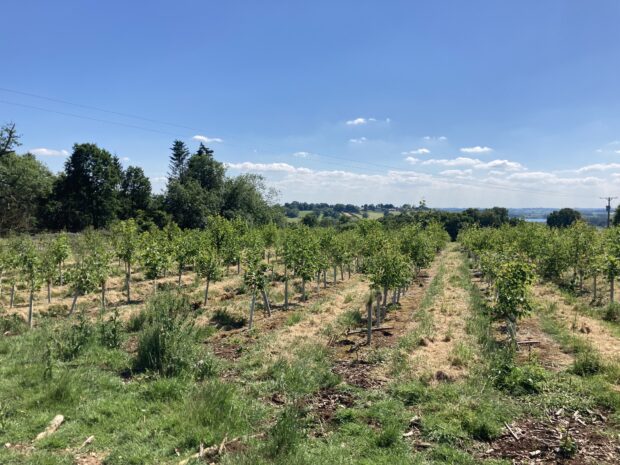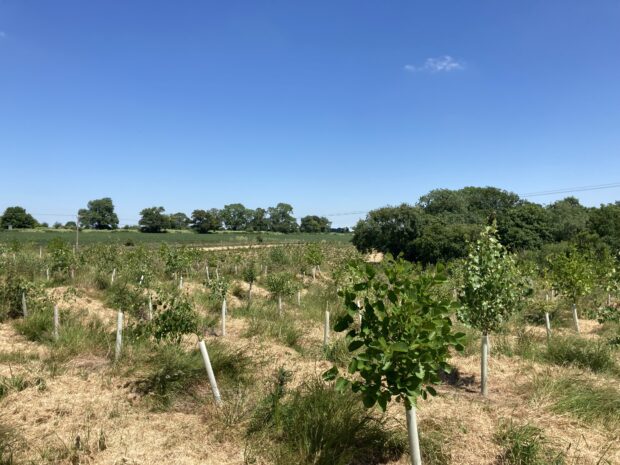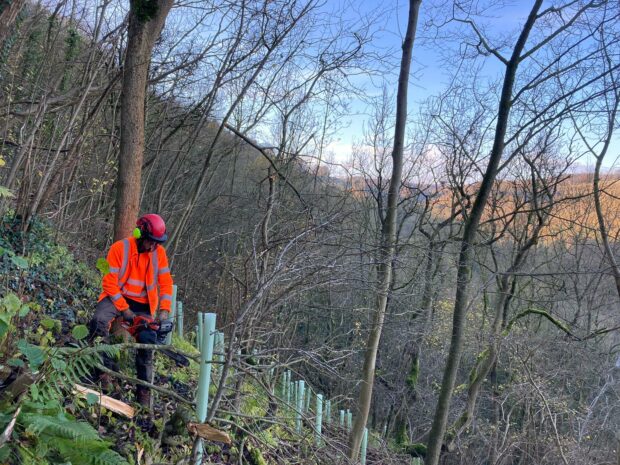
By Steve Clarke, Tree Action Plan Delivery (TAP-D) Higher Officer, East Midlands Area Team
Trees, woodlands, and forests play a crucial role in our fight against climate change, supporting biodiversity and wildlife, providing sustainable resources, creating green jobs, and offering spaces for people to connect with nature.
The England Trees Action Plan was launched in 2021, laying out the government's long-term vision for England’s woodlands, and setting ambitious tree-planting targets of reaching 30,000 hectares per year.
Tree Action Plan Delivery (TAP-D) works in partnership with the major grant providers - Forestry Commission, England’s Community Forests and the Woodland Trust - to help achieve the targets set out in the England Trees Action Plan and has a dedicated team of advisers across the country offering free advice to landowners.
In the East Midlands, we are working to harness the benefits of new woodland through strategic tree planting and woodland creation initiatives
Tree Action Plan Delivery in the East Midlands
Since the launch of the England Trees Action Plan, we have reviewed over 170 proposals in the East Midlands aimed at increasing tree cover and enhancing biodiversity across the region.
Of these proposals, 42% have been planted or due to be planted this winter. These projects equate to 790.9 hectares of new woodland. A further 22% of projects, totalling 277.2 hectares, have been approved.
That’s over 1,000 hectares of new woodland in the East Midlands thanks to the scheme.
One example of TAP-D’s success in the region is the newly planted Barnsdale Wood near Rutland Water. This thoughtfully designed woodland connects to an existing ancient woodland within the Rutland Water Site of Special Scientific Interest (SSSI).
The landowner and his son planted a diverse mix of native species, including:
- Wild Cherry
- Alder
- Birch
- Pedunculate Oak
- Lime
- Hawthorn
- Hazel
As it matures, this woodland will provide a vital extension to the existing habitat, supporting a wide range of wildlife.
In North Kesteven, Lincolnshire, we've seen how community engagement can turn a contentious proposal into a nature recovery success story. A disused allotment has been transformed into a new woodland after residents backed the change of land use proposal, demonstrating how open dialogue and cooperation can lead to positive outcomes for both local communities and the environment.
These newly created woodlands not only enhance the environment but also provide invaluable benefits to local communities, offering spaces for recreation, improving mental health and wellbeing, and creating opportunities for outdoor education.

Targeted approach for maximum impact
As the Tree Action Plan Delivery Officer for the East Midlands, my work looks to create new woodlands where they will have the most significant impact for nature and people. These efforts focus on:
- Expanding and buffering protected sites and ancient woodlands
- Connecting areas of deciduous woodland
- Creating stepping stones of habitat across the countryside, to enable movement of species
- Creating wet woodlands to combat flooding and improve water management
- Establishing riparian woodlands along watercourses to stabilise banks and create wildlife corridors
- Increasing urban tree cover in cities like Derby, Leicester, and Nottingham for flood management, urban cooling and sense of place
Collaborative efforts with local organisations such as the Peak District National Park Authority, Humber Forest, Greenwood Community Forest, and Nottinghamshire Wildlife Trust are helping to identify prime locations for woodland creation and ensure that these new habitats align with broader biodiversity and community goals.
One Team approach
The East Midlands is also part of a nationwide initiative called the One Team approach. This collaborative project brings together the National Trust, Natural England, and the Forestry Commission to identify and accelerate opportunities for woodland and habitat creation.
By streamlining processes and developing joint strategies, the project aims to increase tree and woodland cover across National Trust landscapes, contributing to nature recovery and climate action.

Looking ahead
In the East Midlands, the TAP-D scheme is in addition to the five-year LIFE in the Ravines project in the ravine woodlands of the Peak District Dales Special Area of Conservation (SAC). This project received funding from the European Union’s LIFE Programme to restore ravine woodlands and mitigate the effects of ash dieback. The scheme has planted over 70,000 trees since the project started in 2020, equalling roughly 55 hectares of restored ash-dominant woodland.
As we continue to work for nature recovery across the East Midlands, we're excited to see these new woodlands grow and thrive. Each tree planted is a step towards a greener, more resilient future for our region, its wildlife and people.
To learn more about the strategic vision for woodland creation see the England Trees Action Plan 2021 to 2024